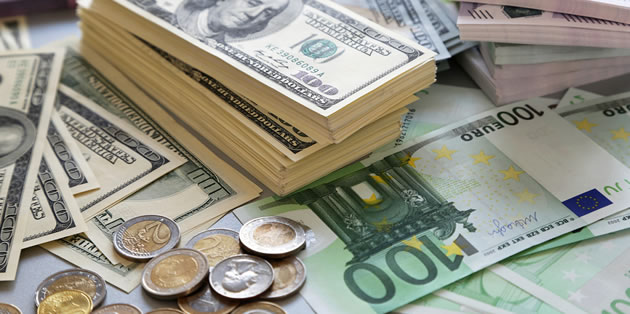The Euro to US Dollar (EUR/USD) exchange rate is forecast to advance next week if economic data out of the USA continues to come in below economist expectations. Gains could be restrained however if concerns over Greece weigh on the single currency.
The Euro to US Dollar (EUR/USD) exchange rate touched a weekly low of 1.1376 in the week of May 11 – 15
As the week ended, the Euro and other currencies advanced against the US Dollar due to the release of more poor data out of the world’s largest economy.
According to the Federal Reserve, industrial production fell -0.3% in April on a monthly basis, confounding forecasts for a rise of 0.1%. On a year-on-year basis, industrial production rose 1.9%, a figure that was less than the 2% seen in the preceding report and worse than economist expectations.
The drop was blamed on a 0.8% decline in mining. Drilling activity has fallen as oil and gas price declines take its toll on the sector.
‘Over the past 12 months, drilling activity has fallen by 46.5%, matching the slump in the active drilling rig count. But that adjustment appears to be all but complete now and, following the most recent rebound in crude oil prices, anecdotal evidence indicates that shale oil firms are even preparing to boost drilling activity again,’ said an economist from Capital Economics.
The Euro to US Dollar (EUR/USD) exchange rate hit a weekly high of 1.1442 in the week of May 11 – 15
U.S. manufacturing production was also flat last month, compared to expectations for an increase for 0.2%. However, the change in manufacturing production for March was revised to a 0.3% rise from a previously estimated 0.1% uptick.
Also weighing on the US Dollar was a report released by the Federal Reserve Bank of New York, which showed that the Empire State manufacturing index rose by 3.9 points from the previous month’s figure of -1.19. Despite the rise, the figure was below economist forecasts for a rise to 5.00.
Adding to the US Dollar’s gloom was data released by the University of Michigan that showed that consumer sentiment fell to a seven-month low of 88.6 this month from 95.9 in April. Economists had been expecting the index to increase to a reading of 96.0.
Looking ahead to next week the Euro could potentially strengthen 1.45 levels and beyond if Tuesday’s Eurozone balance of trade and inflation data come in strongly. Signs that the Eurozone economy is recovering have helped the Euro hit multi-month highs against the ‘Greenback’ in recent session.
The main event for the US Dollar will be Wednesday’s Federal Reserve policy meeting minute’s release. A dovish report and we can expect the ‘Greenback’ to tumble.
The Greece situation could hold back the Euro if no progress is made in negotiations between Athens and its creditors.
Friday’s US inflation rate data also has the potential to send the US Dollar falling. Economists are expecting inflation to rise by just 0.1% on a month-on-month basis. Core inflation is expected to fall from 1.8% to 1.7%.
Volatility for the EUR/USD exchange rate will be likely on May 21 due to the EU summit being held in Latvia. The meeting could see progress being made in the Greek situation as well as the ongoing standoff between NATO and Russia.



